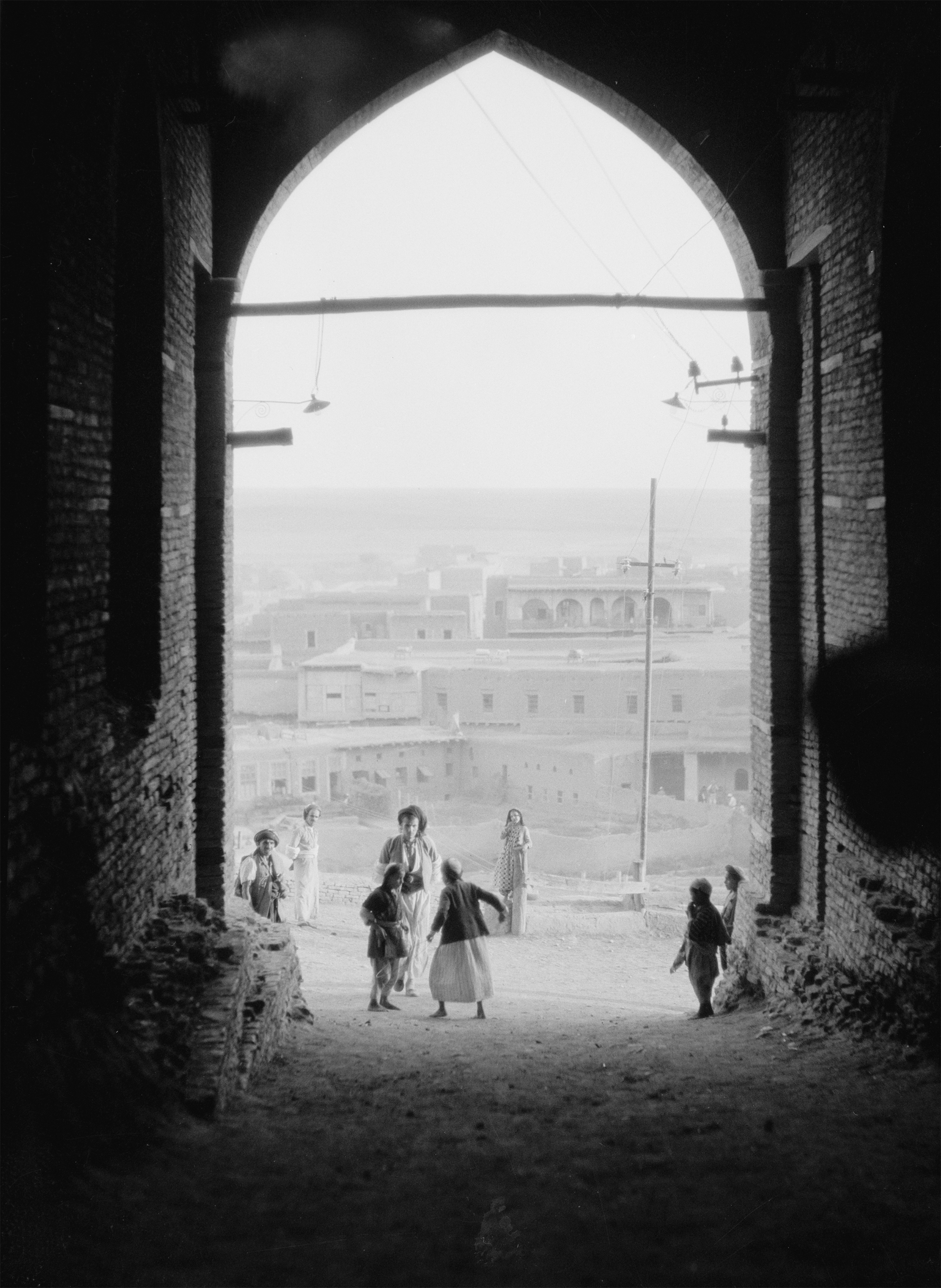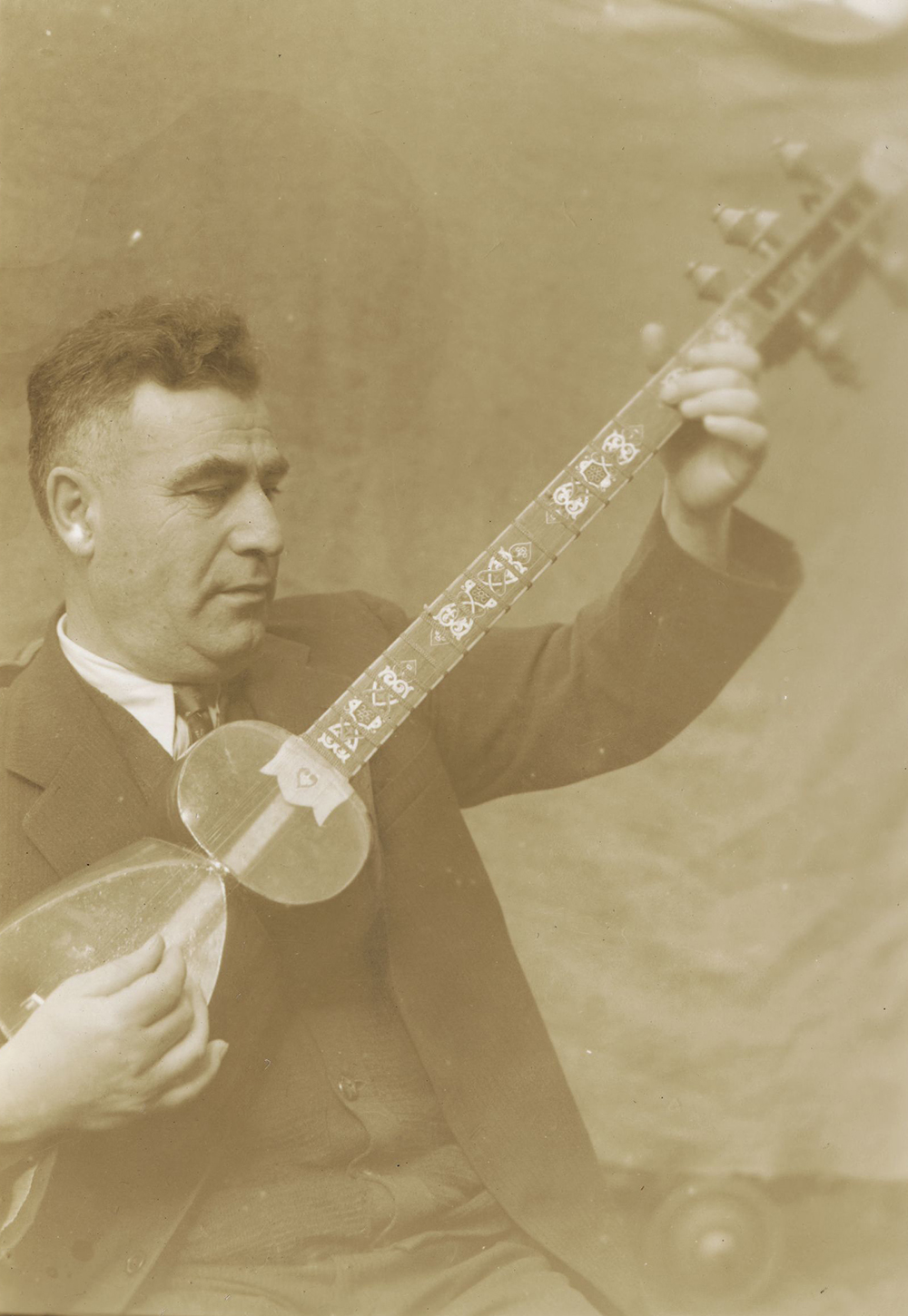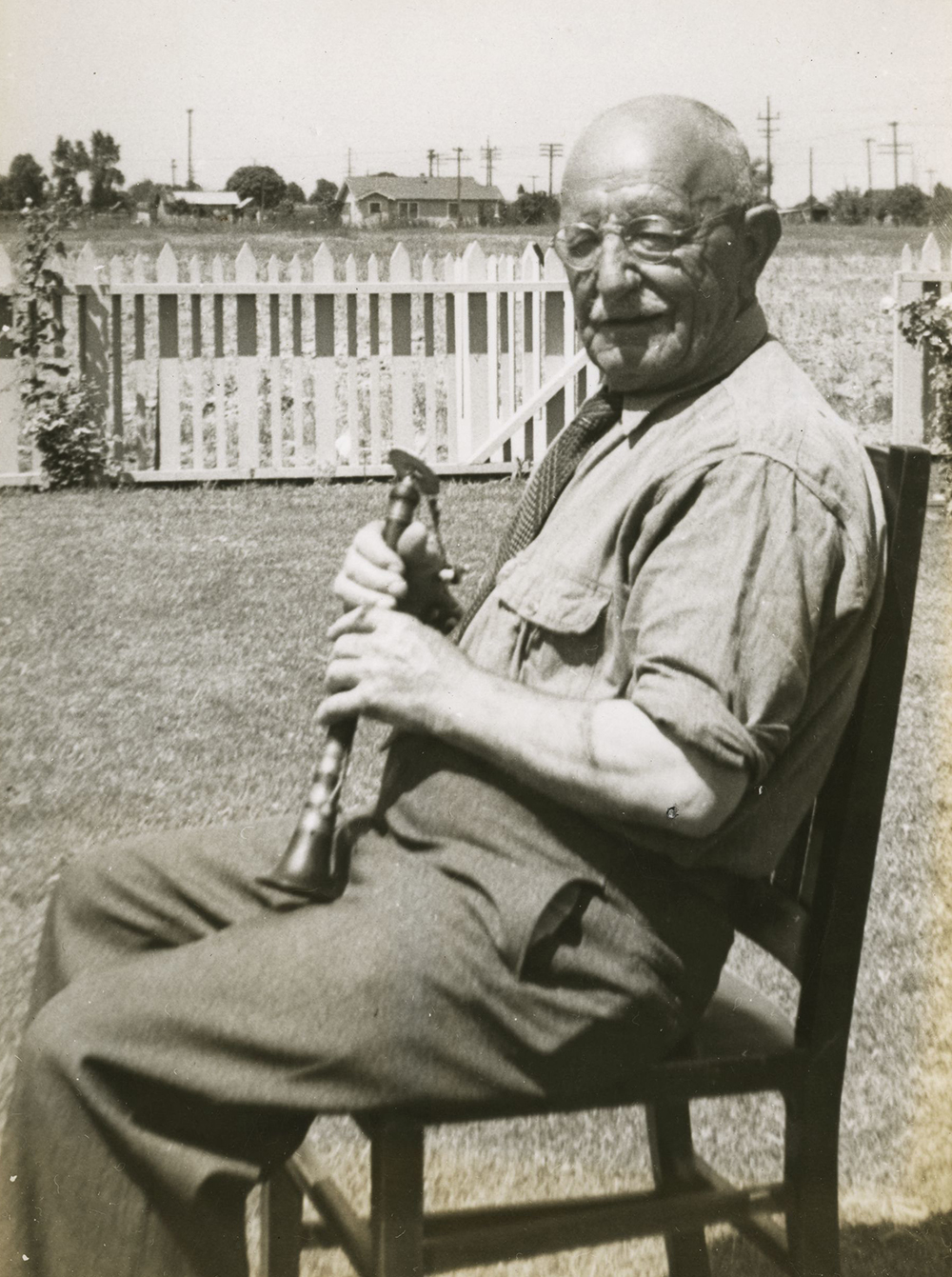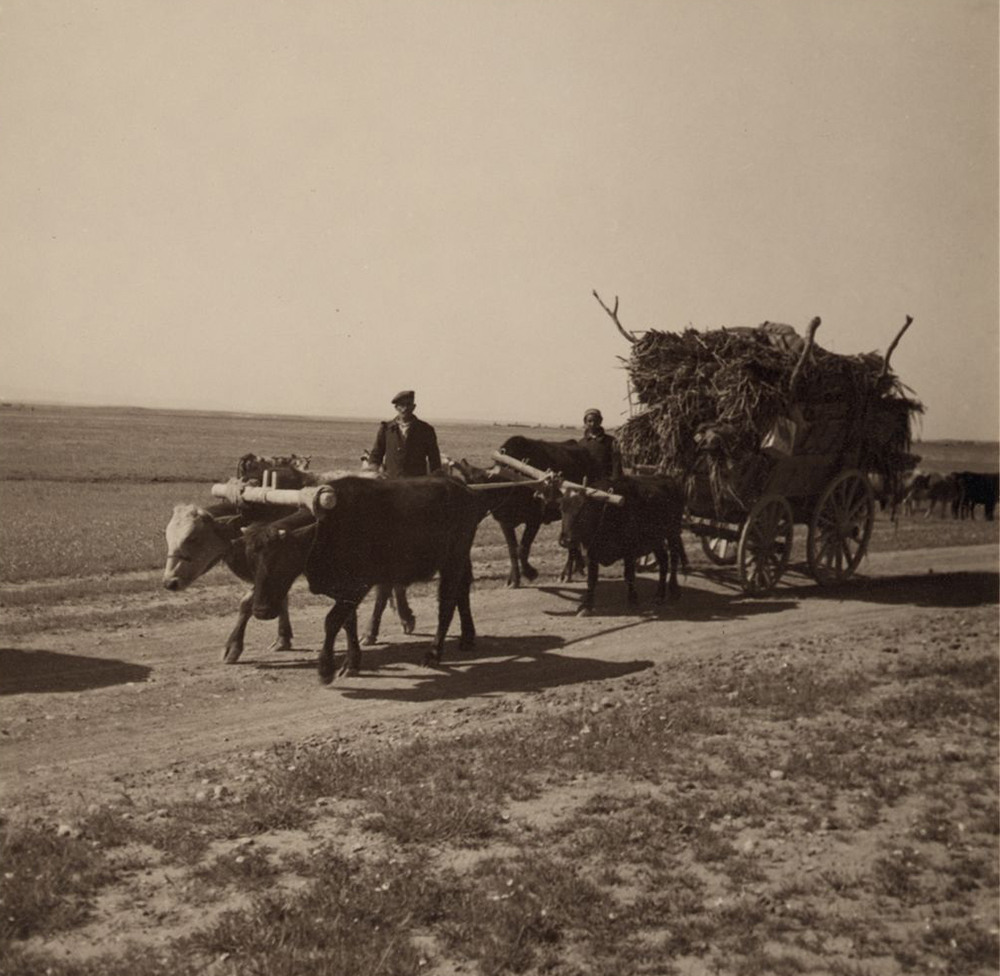
Erbil, Iraq, 1932. Library of Congress, Prints and Photographs Division.
In April 2002, one year before the invasion of Iraq, Assyrians attempted to stage, as the organizing committee put it, the “greatest Assyrian New Year celebration since the fall of the Assyrian Empire.”
Tens of thousands of Assyrians streamed in procession across the hills and market streets of Duhok in northern Iraq—one of the crucibles of their ancestral presence in the region. The festivities culminated in an open-air concert headlined by the popular singer Linda George, who at the age of fifteen had left Iraq for America, where she gradually established a global audience for her Assyrian-language pop, folk, and dance songs.
“The vision we saw from afar is now in front of our eyes,” George told the crowd, thanking a transnational team for putting together the concert, which also featured younger acts from various Assyrian communities around the world. “We are merely here to support you, the root of our nation, who live between these holy rivers,” the Tigris and Euphrates. “It is you who are the true Assyrian patriots, not we who have disowned this blessed land.”
Since the fall of the Neo-Assyrian Empire in 612 bc, Assyrians have navigated many dominant powers, retaining a population mostly circumscribed to their original areas in modern northern Iraq, southern Turkey, and adjacent areas in Syria and Iran. While their political condition became increasingly defined by their status as a Christian people, Assyrian life contains a rich and varied folk culture and a distinct linguistic heritage. As the Ottoman Empire gave way to the homogenizing nation-state, Assyrians lost the partial autonomy granted to religious minorities under that caliphate and were targeted for erasure. The Assyrian genocide, carried out during and after World War I by Turkish nationalists and Kurdish tribes, halved the already relatively small Assyrian population and dispersed those who remained, both in the region and globally. Further massacres and repression would follow, leading to new rounds of departure that continue today.
Modern Assyrian music formed in this lapse between homeland and diaspora. It draws on cultural traditions originating from the multiethnic plains of Orūmīyeh in northwest Iran to the proudly isolated mountain society of Hakkâri in southeast Turkey and demographically complex cities like Aleppo. But it reimagines those traditions in a condition of loss.
George began her performance at the 2002 concert with her song “Ana Letle Atra” (“I Don’t Have a Country”), contrasting not having any land to call her own with the “seeds” of potential Assyrian life. The lyrics represent the evolution of Assyrian music from a celebration of a physically continuous culture to a call for survival across borders and distance. That call has remained essential throughout the music’s many adaptations and contexts.
The time line of Assyrian music production in the early decades of the twentieth century—made up as it is by disconnected, individualized initiatives, albeit ones steeped in shared experiences and themes—is intermittent and incomplete.
The first major Assyrian migration away from the Middle East was to America. In response to incipient genocide in the 1890s, a significant number of Assyrians—mostly from southern Turkey—settled in Massachusetts. Many died en route, especially while traveling on donkey and foot to Istanbul.
Some of the Assyrians who arrived in Massachusetts continued their old lifestyles, farming animals and tobacco. A book by historian Sargon Donabed and his brother Nenos, whose ancestors came to New England from Kharput in the 1910s, collects fragmented imagery from this period. Visual signs of the old country gradually disappear from photographs; by 1920 one man has lost the fez pictured in 1918. New loyalties pop up to replace them, as shown by prominent American flags. Picnics on private farms accompanied by music were common: one photograph features Assyrian men with a clarinet, a fiddle, and an oud.
It was during this period that Assyrians began making musical recordings in America, a reflection of the broader security Assyrians experienced there and the more widespread means of recording compared to the Middle East, where recorded Assyrian music would mainly emerge in the mid-twentieth century.
The transnational history of Assyrian music is marked by lacunae; in the absence of a major organized effort, matching the fragments and facts needed to thread it together remains a challenge. Abboud Zeitoune, whose 2015 book Modern Assyrian Music is one of the few rigorous attempts to put together such a history, points to several examples of such gaps across time, especially in the first half of the century.
Educator Khosrov Malool, an immigrant from southern Turkey to New Jersey, recorded songs in Kurdish in 1912. The first known musical recordings in Assyrian are from 1917. “Zahmat Grishley” (a literal translation of this stock phrase expressing suffering is “I dragged difficulty”) was recorded by Anna and Joseph Yonan, a couple who had left Iran for Connecticut, as part of a four-track album; only three songs are extant.

Moneer Cherie, editor of the Assyrian music blog Qeenatha, found the Yonan records in an eBay auction in 2012. Before that discovery, it was assumed that the earliest Assyrian records had been made in America in 1929. That year New Jersey resident Elias Boyajy recorded songs based on poems written by the iconic Assyrian journalist Naum Faiq, who had fled to America from Diyarbakir in 1912. Murassa Urshan Daniels, who had fled Iran in 1917, also made ten Assyrian-language tracks, including a raw lament for Orūmīyeh, which was close to her village: “Your girls are enslaved, your young men buried.”
For Assyrians displaced within their original region, the spread of music was also subject to processes of survival and assimilation. But in the Middle East, that process was accompanied by the ongoing threat of violence.
In the Simele Massacre of 1933, the Iraqi army and Kurdish tribes rampaged through more than a hundred Assyrian villages in northern Iraq, killing as many as six thousand Assyrians. The massacre was framed as a victory—celebrated with a public parade in Baghdad—for a new state order.
Habbaniyah, a British military base on the Euphrates west of Baghdad established in 1936, housed a post-genocide Assyrian population in service to the British Empire and poised perilously between a ruined Assyrian homeland and the unstable new Iraqi state. In this strange space—a sprawling and well-organized complex where Assyrians were secure under the auspices of the British when not engaging in fighting on their behalf—Assyrian life thrived, and a renewed fusion of sound, land, and joy was fleetingly possible.
At Habbaniyah Assyrians learned Western instruments like the violin, mandolin, and the Hawaiian guitar, and performed waltz, tango, and foxtrot tunes at the Officers’ Club or the cantonment in the late 1940s. But they also continued to play zurna and dawula, the traditional horn and drum. These alternately thunderous and piercing instruments accompanied Assyrian dances, mostly circle dances performed in a line. The Assyrian journalist Mikhael Pius, who grew up in Habbaniyah, has observed that Assyrian instruments and music retained a special place in the camp, especially for young dancers.

After the Iraqi government exerted pressure “through diplomatic channels” in the early 1950s, Pius reports, Assyrians were forced to stop playing their songs on the local Habbaniyah radio station. On-air discussions were restricted to English, and the music changed from live and recorded Assyrian songs to Western hits chosen by listeners. The camp wound down in stages, as did the overall British presence in Iraq, closing formally in 1959. It remains fondly remembered by many Assyrians as a site of peaceful communal experience and shared musical expression—and bitterly recalled as a testament to national powerlessness.
During the same period, live music thrived in Assyrian social clubs in major Iraqi cities. But after the republican coup of 1958 and the Ba’athist coup in 1968, public cultural expression was suppressed. Fear and flight emerged once again.
The Iraqi state issued a 1972 decree expanding cultural and linguistic rights for Assyrians (who were classified by their language rather than ethnicity), encompassing education, broadcasting, and literary journalism. But Sargon Donabed writes that the “surge in Assyrian cultural activities” that immediately ensued became a means of surveillance and oppression. A cultural association that produced an Assyrian literary journal was infiltrated and politicized by Ba’ath supporters, and an hourlong Assyrian radio show was “quickly usurped by Ba’athists and used for pro-party propaganda.” The purging of Assyrians the state deemed “noncompliant” included singer Shlimon Bet-Shmuel, who in 1973 performed, first in Baghdad and then in Kirkuk, a song commemorating the Simele massacre. He was detained and beaten before fleeing the country. Beloved lyricist and dramatist Sami Yako was tortured in 1978 after singing a patriotic Assyrian song, and soon relocated to London.
Surveillance and repression in Iraq would soon give way to more sweeping acts of state violence. But the 1972 decree offered a glimpse of transnational possibility. Responding to an announcement on the Assyrian radio station in Baghdad, which could be heard in northeast Syria, Edwar Mousa and George Homeh—both eventually became prominent musicians—sent their rudimentary cassette recordings across the border and soon heard them broadcast live.
Many survivors of the Simele massacre settled in Syria, building new villages along the Khabur River and adding to preexisting settlements built along the Turkish border after the genocide. Cities like Aleppo, which had an Assyrian quarter, and Qamishli, originally founded by Assyrians in 1926, brought together migrants from across the region.

Beginning in the 1950s, Assyrians in Syria began preserving and organizing their culture in a more serious way. An emerging intellectual vanguard strove to integrate patriotic pedagogy, the Assyrian language, and Assyrian folk culture, especially dance. A new tradition of Assyrian songwriting emerged, answering the hunger for material from a burgeoning audience.
In Syria Assyrians of different church affiliations and dialects—previously separated by distance—were able to mix. Along the Khabur, distinctly Assyrian musical forms such as rawe (a narrative tradition of a cappella singing) and leliyana (performed by women at weddings) were still practiced. Western Assyrians, who speak a different dialect of Assyrian and come from a more austere cultural background influenced by the Syrian Orthodox church, were exposed for the first time to the rich folk traditions and dances of their eastern counterparts.
Assyrians in Turkey launched their own underground cultural revival. Singing in Assyrian was illegal, but locals nonetheless threw parties where they danced to Assyrian music in Istanbul during the late 1960s and early 1970s, evading the attention of the police. These events occasionally brought in Assyrians from Iran and Syria, and long-lasting networks were established, lyrics were shared, and musical collaborations hatched.
As Assyrians from Syria and Turkey began to migrate to Europe in the 1960s and 1970s, especially to Germany and Sweden, this independent spirit extended into the diaspora. New Assyrian initiatives—journals, associations, gatherings, parties, and transnational political projects—thrived in conditions of peace and freedom in Europe. But the joy of song and dance was always inseparable from the struggle to maintain the culture from which it came.
In the Middle East, the Assyrian language was an essential marker of difference; in the diaspora, as Assyrian declined as an everyday language, Assyrian song became an almost hallowed form of contact with it. In finding the most galvanizing resonance of which the Assyrian language is capable, Assyrian song underlined the cost of its disappearance in daily life.
Assyrian dance also took on a new significance in the diaspora, serving as an ephemeral form of reclamation and mutual recognition. In the words of the ethnomusicologist Nadia Younan, the Assyrian circle dance sheikhani, a fixture at celebrations, “temporarily demarcates the space of performance as an imagined Assyria and serves as a vehicle for the migration of a collective memory.”
Assyrian migration away from Iraq created a new music scene in America. By 1974 totemic balladeer Ashur Bet-Sargis said of his new American environment, “There were more singers than birds in the sky.” These singers went on to inspire Assyrians globally, and Bet-Sargis’ generation of performers formed the popular pantheon of Assyrian music. They reached back to the past in search of the essential Assyrian sensibility, and yet they also sang the wound of exile. These singers were the wandering representation of an Assyrian essence that was tethered to past and place but defined by increasing distance from both.
The leaders of this diaspora scene—including Linda George, Sargon Gabriel, and Evin Agassi—took on an aura of celebrity. Away from the powerful moral and social domain of the church and the indifference of Western societies to Assyrian survival, they equipped Assyrians through their music to reimagine solidarity and courtship in the diaspora.
With new interpretations of rock, pop, and disco aesthetics, musical artists could unlock elements of the contemporary Assyrian experience. Edward “King Biba” Yousif gained renown as a teenager singing in Arabic on Iraqi television, but his Assyrian peers soon led him to sing and record in his native tongue. He left Iraq for America in 1979. A Dionysian figure, Biba is legendary for his almost grotesquely intense live performances. A wrenching 1978 live recording of “Ta Door Alle” (“Come, Return to Me”) features Biba singing against morphing musical passages, which feature electric guitar solos, drum fills and psychadelic rock-style organ parts. His 1980s performances in Chicago and Detroit of songs such as “Saperchewin” (“I Am a Wanderer”) are a direct expression of Assyrian alienation:
All of my life has been filled with grief
Resembling the ruins of Nineveh
That is how I have remained, in this world:
Like a bird, distant from his nest
Biba’s gift was to harmonize his private agony with that of his nation. He and other Assyrian singers have fueled the permanent Assyrian yearning for historical restitution by mixing memory and hope. Gabriel’s “Hakkâri” evokes a picture of history he inherited rather than a world he touched:
I will drink ancient wine, prepared by the hands of young women
I will sing the rawe of someone who is longing; my country I haven’t forgotten:
My father, the mountain and the valley
My mother, the plain and the wilderness
This song, popular at dances, also seeks, however impractically, to transform that picture into a shared experience of life. The music video for Gabriel’s “Elana d’Bitmeh” (“Terebinth Tree”) depicts his intimate attempt to connect with disappearing Assyrian life in Duhok, the final remaining locus of Assyrian pastoralism and the target of ongoing land confiscation by neighboring Kurds.
During the 1980s, when the Middle East was dominated by new conflicts and forms of repression, the centrality of Assyrian music to the global national consciousness only solidified. Cassette tapes became a constant presence in the otherwise scattered homes of an even more scattered people.
The export of cassettes into northern Iraq was not permitted even after the no-fly zone was imposed in 1991, according to the editors of Qeenatha, but bootlegging and distribution person to person or in small shops ensured the spread of new Assyrian music recorded in the diaspora, including through local performances and celebrations.
Which brings us back to the 2002 concert, where this story comes full circle—but only in moments. There was no dawn after the United States invaded Iraq in 2003; instead what followed was perhaps the final round of genocide and exodus from Iraq and the surrounding region. The paradox of Assyrian music remains the paradox of diaspora: the condition linking Assyrians across the discontinuous terrain of Assyrian experience. Away from their homeland, Assyrians have finally been granted the freedom to maintain their culture, but only at the expense of its source and guarantee of its future: being Assyrian in Assyria.